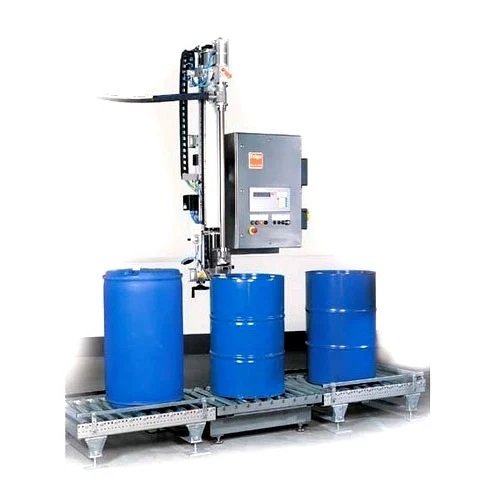In modern industries, efficient and accurate packaging of liquids and powders is essential for maintaining productivity and meeting quality standards. The drum filling system plays a pivotal role in achieving these objectives. This article delves into the significance of drum filling systems, their purpose, applications, and the various components that make up these indispensable industrial tools.
What is a Drum Filling System?
A drum filling system is a specialized apparatus designed to automate the process of filling drums, barrels, or containers with liquids or powders. These systems are widely used across various industries, including chemicals, food and beverage, pharmaceuticals, petrochemicals, and more. The primary purpose of a drum filling system is to improve efficiency, accuracy, and safety during the packaging process, ultimately reducing production costs and enhancing product quality.
Why Businesses Use Drum Filling Systems?
Precision and Accuracy: Drum filling systems are equipped with advanced technologies, such as flow meters and load cells, which ensure precise measurement and filling. This accuracy is crucial, especially when dealing with costly or hazardous substances, as even slight deviations can lead to financial losses or safety risks.
Increased Efficiency: Manual filling processes are time-consuming and labor-intensive. Drum filling systems automate the process, reducing human intervention and enabling businesses to handle higher production volumes with greater speed and consistency.
Enhanced Product Quality: Maintaining product consistency and quality is vital for customer satisfaction and market competitiveness. Drum filling systems minimize the risk of contamination and spills, ensuring that the packaged products meet stringent quality standards.
Safety and Compliance: Many industries handle hazardous chemicals or substances, which require careful handling and adherence to safety regulations. Drum filling systems incorporate safety features like anti-spill mechanisms, fume extraction, and proper sealing, reducing the risk of accidents and ensuring compliance with safety standards.
Cost Savings: Though drum filling systems may require initial investment, they offer long-term cost savings due to reduced material wastage, increased productivity, and minimized labor expenses.
How is a Drum Filling System Used?
Automatic Liquid Filling: In liquid filling applications, the system uses pumps, flow meters, and level sensors to accurately measure and dispense the desired quantity of liquid into the drums. The system can be programmed to fill drums sequentially, ensuring uniformity in the filling process.
Powder Filling: For powder filling, drum filling systems utilize augers or screw feeders to measure and dispense the powder into the containers. These systems are particularly prevalent in industries dealing with powdered chemicals, pharmaceuticals, and food products.
Integration with Production Lines: Drum filling systems can be seamlessly integrated into existing production lines, making them an integral part of the manufacturing process. Automated filling ensures a smooth and uninterrupted flow of products, enhancing overall production efficiency.
Components of a Drum Filling System
Filling Nozzle: The filling nozzle is a critical component that directs the liquid or powder into the drum. It often incorporates mechanisms like drip prevention and anti-foaming features to maintain cleanliness and accuracy during the filling process.
Conveyor System: The conveyor system facilitates the movement of drums or containers to the filling station and then transports them away after filling. These systems can be customized to accommodate different drum sizes and shapes.
Weighing System: Many drum filling systems are equipped with load cells to accurately measure the weight of the drum during the filling process. This data ensures that the correct quantity of material is dispensed into each container.
PLC and HMI Controls: Programmable Logic Controllers (PLCs) and Human-Machine Interfaces (HMIs) enable operators to set filling parameters, monitor the filling process, and diagnose any issues that may arise.
Safety Features: Drum filling systems incorporate safety mechanisms, such as fume extraction systems, spill containment, emergency stop buttons, and interlocks, to prevent accidents and ensure operator safety.
Cleaning and Maintenance Systems: Proper cleaning and maintenance are essential to prevent cross-contamination and ensure the longevity of the equipment. Many drum filling systems in Singaporefeature automated cleaning routines for ease of use.
Learn more about it – jacin’s ruse armor set
In conclusion, the drum filling system is a pivotal tool used across diverse industries to streamline packaging operations, improve efficiency, and ensure product quality and safety. By automating the filling process and employing precision measurement technologies, these systems contribute significantly to businesses’ success. With their various components working in tandem, drum filling systems offer a cost-effective and reliable solution for industries that require accurate and efficient packaging of liquids and powders. As technology continues to advance, these systems will undoubtedly play an even more critical role in shaping the future of industrial operations.

